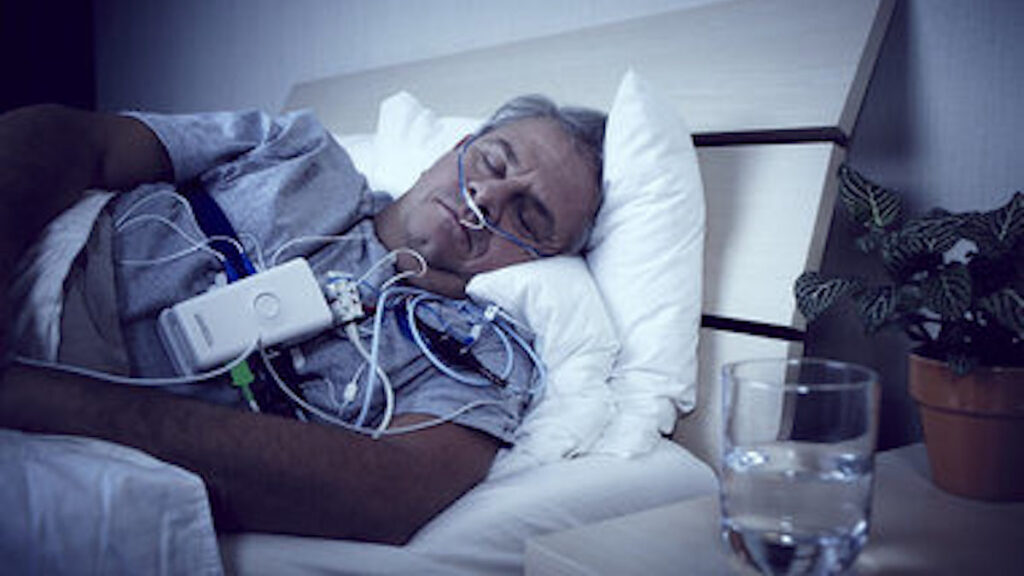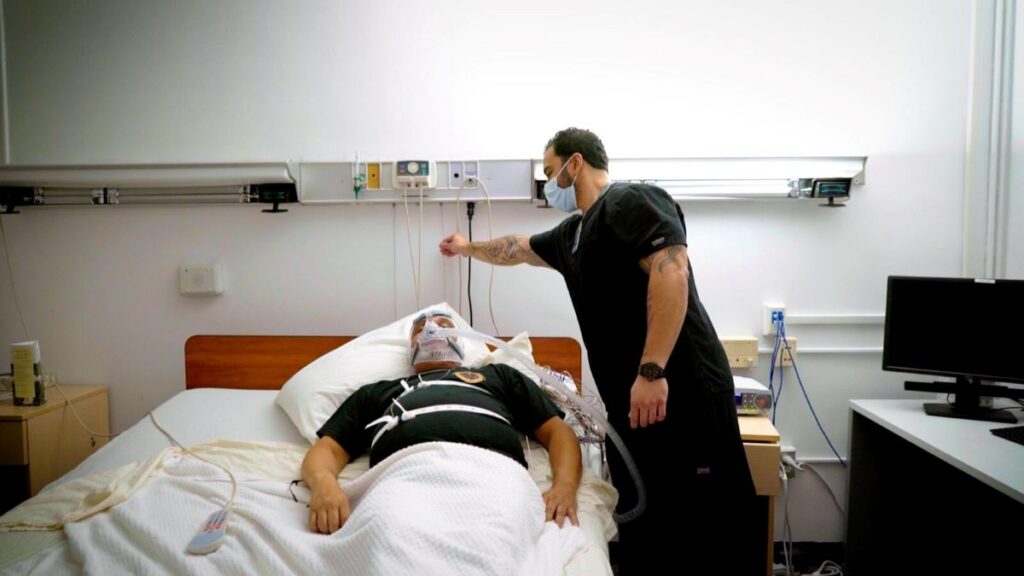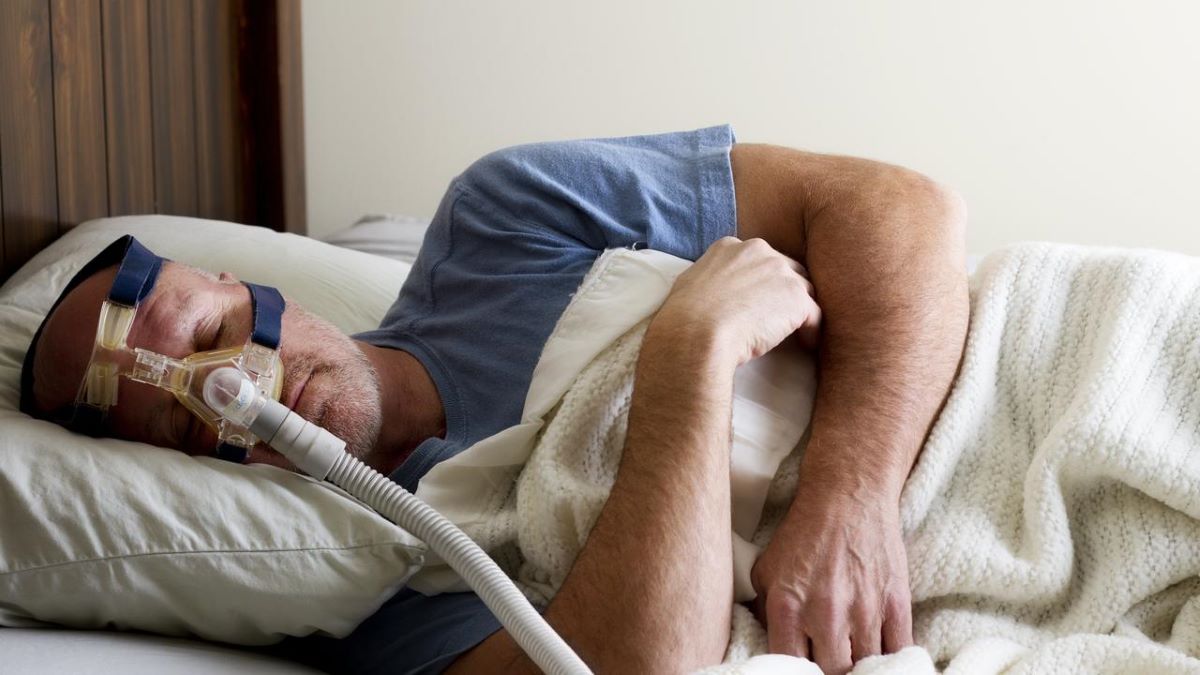What Is a Sleep Study and Why Is It Conducted in Adelaide?
A sleep study conducted in Adelaide is formally known as polysomnography (PSG). It is a comprehensive overnight test that monitors your body’s physiological processes while you sleep. This diagnostic tool tracks everything from brain activity to breathing patterns using sensors placed strategically on your body.
How Does a Sleep Study Work?
The test is completely non-invasive. Small sensors attach to your scalp, face, chest, fingers, and legs using mild adhesive tape or paste. These sensors connect to recording equipment that captures data throughout the night without causing pain or requiring any surgical procedures. You simply sleep as naturally as possible while the technology does its work.
Where Are Sleep Studies Conducted in Adelaide?
Adelaide’s healthcare providers conduct these studies in two primary settings:
- Hospital-based sleep laboratories with dedicated monitoring rooms and overnight supervision
- Home-based testing using portable equipment for patients who prefer their own environment
Why Are Sleep Studies Important?
The purpose of conducting sleep testing Adelaide addresses a critical health need. Many residents experience undiagnosed sleep disorders that cause excessive daytime tiredness, concentration problems, and serious health risks including cardiovascular complications. These tests provide doctors with objective data to identify conditions like obstructive sleep apnea, insomnia, narcolepsy, and movement disorders that disrupt sleep quality.
Early diagnosis through polysomnography and professional sleep testing Adelaide services enables targeted treatment, reducing long-term health complications and improving daily functioning for patients across the city.
What Physiological Processes Does the Overnight Sleep Test Measure?
The overnight sleep test measurements capture three fundamental neurological activities that define sleep architecture.
1. Monitoring Brain Waves with EEG
Electroencephalography (EEG) monitors brain waves through scalp sensors, revealing the electrical patterns that distinguish different sleep stages—from light drowsiness to deep restorative sleep.
Brain wave monitoring serves as the foundation for understanding sleep quality. The EEG records frequency and amplitude variations that indicate whether you’re cycling through sleep stages properly. Slow delta waves characterise deep sleep, whilst faster beta waves suggest lighter stages or arousals that fragment rest.
2. Tracking Eye Movements for REM Sleep Identification
Eye movements tracked through electrooculography (EOG) provide critical markers for identifying REM sleep. Sensors placed near the eyes detect rapid darting movements that occur during dream states, typically emerging 90 minutes after sleep onset. The absence of these movements during non-REM stages helps clinicians map your complete sleep cycle progression throughout the night.
3. Assessing Muscle Activity during REM Sleep
Muscle activity EMG measurements capture tone changes in your chin and legs. During REM sleep, healthy muscle tone drops to near-paralysis levels—a protective mechanism preventing dream enactment. Abnormal muscle activity during this phase may indicate REM behaviour disorder, whilst excessive leg movements point toward periodic limb movement disorder or restless leg syndrome. These recordings distinguish between normal sleep twitches and pathological movements requiring treatment.
How Does the Sleep Study Monitor Cardiovascular and Respiratory Functions?
Monitoring Heart Activity
Heart rhythm ECG electrodes placed on the chest continuously track cardiac activity throughout the night, revealing irregularities like arrhythmias or bradycardia that often worsen during sleep. This monitoring proves particularly valuable since certain heart conditions only manifest during specific sleep stages, especially when breathing disturbances occur.
Analysing Breathing Patterns
Breathing patterns receive comprehensive analysis through multiple sensors working simultaneously. Nasal airflow sensors detect the volume and speed of air moving through the airways, whilst elastic belts wrapped around the chest and abdomen measure respiratory effort. These measurements distinguish between obstructive events—where effort continues but airflow stops—and central events where both cease together.
Measuring Oxygen Levels
Oxygen levels oximetry uses a small clip attached to the fingertip that shines light through the skin to measure blood oxygen saturation. Normal readings stay above 95%, but drops below 90% indicate significant oxygen deprivation requiring medical intervention. The frequency and severity of these desaturations directly correlate with sleep apnoea severity.
Detecting Snoring
Snoring detection employs sensitive microphones positioned near the neck to capture sound intensity and patterns. The recordings help clinicians differentiate between simple snoring and upper airway resistance syndrome, where breathing becomes laboured despite maintaining airflow. Snoring characteristics—including volume, frequency, and timing relative to body position—provide diagnostic clues about airway obstruction sites.
What Additional Body Movements and Positions Are Monitored During the Study?
How Body Position Affects Sleep
Body position monitoring reveals how sleeping posture affects breathing patterns and sleep quality throughout the night. Sensors detect whether you’re lying on your back, side, or stomach—critical information since many people experience worse sleep apnoea when sleeping supine. Adelaide sleep clinics use this data to determine if positional therapy could reduce symptoms without requiring more intensive treatments.
Understanding Leg Movements During Sleep
Leg movements sleep study components capture involuntary muscle activity that disrupts rest. Sensors placed on both legs record:
- Frequency and duration of limb movements
- Timing of movements in relation to sleep stages
- Patterns indicating periodic limb movement disorder (PLMD)
- Intensity of muscle contractions during movement episodes
These measurements distinguish between normal sleep twitches and pathological movements characteristic of PLMD or restless leg syndrome. PLMD involves repetitive leg jerks every 20-40 seconds, often causing brief arousals that fragment sleep without full awakening. Patients rarely remember these disturbances but experience daytime fatigue as a consequence.
Restless leg syndrome presents differently, with uncomfortable sensations creating an irresistible urge to move legs, particularly when trying to fall asleep. The overnight recording captures both the subjective reports and objective muscle activity, allowing clinicians to differentiate between these conditions and recommend targeted treatments ranging from lifestyle modifications to specific medications.
What Sleep Stages and Quality Indicators Are Assessed by the Test?
The overnight test identifies distinct sleep stages by analysing brain wave patterns, eye movements, and muscle activity recorded throughout the night. REM sleep measurement captures rapid eye movements and reduced muscle tone characteristic of dream sleep, whilst non-REM stages are divided into three progressively deeper levels—N1 (light sleep), N2 (intermediate sleep), and N3 (deep, restorative sleep). Each stage produces unique electrical signatures on the EEG that technologists can interpret.
Sleep quality assessment extends beyond simply measuring how long you sleep. The study quantifies:
- Sleep efficiency: the percentage of time actually asleep versus time spent in bed
- Sleep latency: how quickly you fall asleep initially
- Arousal index: the number of brief awakenings per hour that fragment rest
- Stage transitions: how smoothly you move between sleep cycles
Frequent arousals—even those lasting just seconds—disrupt the natural progression through sleep stages. These micro-awakenings may not be consciously remembered yet significantly impact how refreshed you feel upon waking. The test reveals whether you’re achieving adequate amounts of deep N3 sleep (essential for physical restoration) and REM sleep (crucial for cognitive function and memory consolidation). Abnormal sleep architecture, such as reduced REM or excessive N1 sleep, often indicates underlying disorders requiring treatment.

Which Common Sleep Disorders Can Be Diagnosed Through This Test?
1. Obstructive Sleep Apnea (OSA)
The diagnosis of obstructive sleep apnea (OSA) heavily depends on the data obtained from an overnight polysomnography test. This test is designed to identify specific breathing problems that occur during sleep, such as:
- Breathing interruptions
- Reduced airflow
- Drops in blood oxygen saturation
By analysing this data, clinicians can measure the severity of OSA using a metric called the Apnoea-Hypopnoea Index (AHI), which indicates the number of breathing events per hour. Here’s how the severity levels are defined:
- Mild OSA: 5-15 events hourly
- Moderate OSA: 15-30 events hourly
- Severe OSA: more than 30 events hourly
2. Insomnia
Insomnia assessment reveals itself through distinctive patterns in the recorded data. The study captures prolonged periods of wakefulness after initially falling asleep, frequent night-time awakenings, and early morning wake times with inability to return to sleep. Brain wave activity demonstrates heightened alertness when the body should be maintaining deeper sleep stages, providing objective evidence beyond patient-reported symptoms.
3. Narcolepsy
Narcolepsy testing combines overnight findings with daytime assessments. The sleep study detects abnormal REM sleep patterns, particularly when REM occurs within 15 minutes of falling asleep—a hallmark indicator. Muscle tone measurements during REM periods help identify cataplexy episodes. Hypersomnolence disorders emerge through analysis showing excessive total sleep time yet poor sleep quality, explaining persistent daytime drowsiness despite seemingly adequate rest duration. These findings guide specialists toward targeted treatment approaches for each diagnosed condition.
How Is the Overnight Sleep Study Conducted in Adelaide Settings?
Does the test require a hospital overnight stay Adelaide or can it be done at home? Both options are available through Adelaide healthcare providers, with the choice depending on the complexity of your suspected sleep disorder and your individual circumstances.
1. Hospital-Based Polysomnography
Hospital-based polysomnography involves arriving at the sleep clinic in the evening, typically around your normal bedtime. A trained sleep technologist attaches sensors to specific locations on your body using mild adhesive paste or tape. These include electrodes on your scalp for brain wave monitoring, sensors near your eyes and chin, bands around your chest and abdomen, a finger probe for oxygen levels, and leg sensors. The equipment connects to a computer in an adjacent monitoring room where the technologist observes your sleep via video camera and intercom throughout the night. Private rooms are designed to resemble comfortable bedrooms rather than clinical spaces, helping you sleep as naturally as possible.
2. Home-Based Portable Monitoring
Home-based portable monitoring offers a convenient alternative for straightforward cases. Local Adelaide sleep specialists provide compact recording devices you collect from their clinic. After receiving instructions on sensor placement, you conduct the test in your own bed. The equipment typically measures breathing, oxygen levels, heart rate, and body position—fewer parameters than hospital studies but sufficient for diagnosing conditions like obstructive sleep apnea. You return the device the following morning for data analysis.
What Preparations Should Patients Make Before Undergoing a Sleep Study?
Proper preparation ensures the test accurately captures your typical sleep patterns and provides reliable diagnostic data. Following sleep study preparation guidelines provided by Adelaide clinics helps technologists obtain clear readings from the monitoring equipment.
Substances to Avoid Before Your Test:
- Caffeine – Skip coffee, tea, energy drinks, and chocolate for at least 6 hours before the study
- Alcohol – Avoid alcoholic beverages as they alter natural sleep architecture
- Daytime naps – Stay awake during the day to ensure you’re naturally tired at bedtime
Skin and Hair Preparation:
Your skin needs to be clean and free from products that interfere with sensor adhesion. Remove all makeup, facial oils, moisturisers, and hair styling products before arriving. Wash your hair with regular shampoo only—avoid conditioners, gels, or sprays that create a barrier between sensors and your scalp.
Maintaining Your Normal Routine:
Continue taking prescribed medications unless your doctor advises otherwise. Wear comfortable sleepwear and bring items that help you relax, such as your own pillow or a book. Stick to your regular bedtime routine as closely as possible—the goal is to replicate a typical night’s sleep rather than creating artificial conditions. This authenticity allows the study to capture genuine sleep disturbances rather than anomalies caused by an unfamiliar environment.
Importance of Following Guidelines
Adhering to these preparatory guidelines not only enhances the quality of the data collected during the sleep study but also significantly improves the accuracy of the diagnosis derived from it.
How Are Sleep Study Results Used to Improve Health Outcomes?
Interpreting sleep study results begins when a specialist physician reviews the recorded data to identify specific sleep disorders and their severity. The doctor analyses patterns in breathing, oxygen levels, brain activity, and movement to establish an accurate diagnosis that guides treatment decisions.
Treatment pathways vary depending on the diagnosed condition:
- Obstructive Sleep Apnoea (OSA): Continuous Positive Airway Pressure (CPAP) therapy remains the gold standard, delivering pressurised air through a mask to keep airways open during sleep
- Insomnia: Cognitive Behavioural Therapy for Insomnia (CBT-I) addresses underlying thought patterns and sleep habits without medication
- Periodic Limb Movement Disorder: Medications or lifestyle modifications may reduce disruptive leg movements
- Narcolepsy: Stimulant medications and scheduled napping help manage excessive daytime sleepiness
Treatment recommendations for sleep disorders extend beyond immediate symptom relief. Untreated sleep apnoea significantly increases cardiovascular disease risk, including hypertension, heart attack, and stroke. Addressing these conditions through targeted interventions improves daytime alertness, cognitive function, and workplace productivity whilst reducing long-term health complications.
Adelaide sleep specialists typically schedule follow-up appointments to assess treatment effectiveness, adjust CPAP pressure settings, or explore alternative therapies if initial approaches prove insufficient. This ongoing management ensures patients achieve optimal sleep quality and sustained health improvements.
Are There Additional Tests Related to the Overnight Sleep Study in Adelaide?
Yes, two specialised daytime tests often complement overnight polysomnography results. The Multiple Sleep Latency Test (MSLT) Adelaide and Maintenance of Wakefulness Test (MWT) provide crucial data about daytime functioning that cannot be captured during night-time monitoring alone.

Multiple Sleep Latency Test (MSLT) Adelaide
The Multiple Sleep Latency Test MSLT Adelaide measures how quickly you fall asleep in quiet daytime situations. Conducted the day after your overnight study, you’ll be given four to five 20-minute nap opportunities spaced two hours apart. Sensors similar to those used during polysomnography monitor when sleep begins and which stage you enter first. This test proves particularly valuable for diagnosing narcolepsy and quantifying excessive daytime sleepiness severity.
Maintenance of Wakefulness Test (MWT)
The Maintenance of Wakefulness Test MWT takes the opposite approach. Rather than measuring sleep tendency, it assesses your ability to stay awake whilst sitting in a dimly lit, quiet room during four 40-minute sessions throughout the day. This test helps determine whether treatments are working effectively and whether you’re safe to perform activities requiring sustained alertness, such as driving.
Both tests work alongside your overnight sleep study results to create a complete picture of your sleep-wake patterns. Your sleep specialist reviews all data together, ensuring any diagnosis considers both night-time sleep quality and daytime functioning before recommending appropriate treatment pathways.
FAQs About What Does the Overnight Test Actually Measure?
A sleep study, or polysomnography (PSG), is an overnight diagnostic test that monitors brain activity, breathing patterns, heart rate, muscle activity, and more. It helps identify sleep disorders like obstructive sleep apnea, insomnia, and narcolepsy, enabling targeted treatment to improve health and daily functioning.
2. How Does a Sleep Study Work?
Small, non-invasive sensors are attached to the scalp, face, chest, fingers, and legs. These sensors record physiological data while you sleep, allowing doctors to analyse brain waves, eye movements, breathing, heart rate, and oxygen levels without pain or surgery.
3. Where Are Sleep Studies Conducted in Adelaide?
Sleep studies can be done in:
Hospital-based sleep laboratories with overnight supervision
Home-based testing using portable equipment for patients who prefer sleeping in their own environment
4. What Physiological Processes Does a Sleep Study Measure?
A sleep study monitors:
Brain waves (EEG) to determine sleep stages
Eye movements (EOG) for REM sleep detection
Muscle activity (EMG) for REM behaviour disorder or limb movement issues
Heart rate and rhythm (ECG)
Breathing patterns and oxygen saturation
Snoring and body position
5. Which Sleep Disorders Can Be Diagnosed Through a Sleep Study?
Common conditions detected include:
Obstructive Sleep Apnea (OSA)
Insomnia
Narcolepsy
Periodic Limb Movement Disorder (PLMD) and Restless Leg Syndrome
6. How Is the Sleep Study Conducted in Adelaide Settings?
Hospital-based PSG: Sensors are applied, and a technologist monitors sleep overnight.
Home-based monitoring: Portable devices measure breathing, oxygen levels, and heart rate, allowing sleep in a familiar environment.
7. What Preparations Are Needed Before a Sleep Study?
Patients should:
Avoid caffeine, alcohol, and daytime naps
Keep skin clean and free from oils or hair products
Maintain normal bedtime routines and wear comfortable sleepwear
Follow specific instructions from Adelaide sleep clinics for accurate results
8. How Are Sleep Study Results Used to Improve Health Outcomes?
Specialists analyse the data to identify sleep disorders and guide treatment, such as:
CPAP therapy for sleep apnea
CBT-I for insomnia
Medications or lifestyle changes for limb movement disorders
Stimulants and scheduled naps for narcolepsy
Follow-ups ensure ongoing effectiveness and long-term health improvements.
9. Are There Additional Tests Related to Sleep Studies in Adelaide?
Yes, daytime tests complement overnight PSG:
Multiple Sleep Latency Test (MSLT): Measures how quickly you fall asleep during the day, used for narcolepsy diagnosis
Maintenance of Wakefulness Test (MWT): Assesses your ability to stay awake, evaluating treatment effectiveness and safety for daily activities
Related : Top 7 Signs You Might Need Sleep Testing in Adelaide
